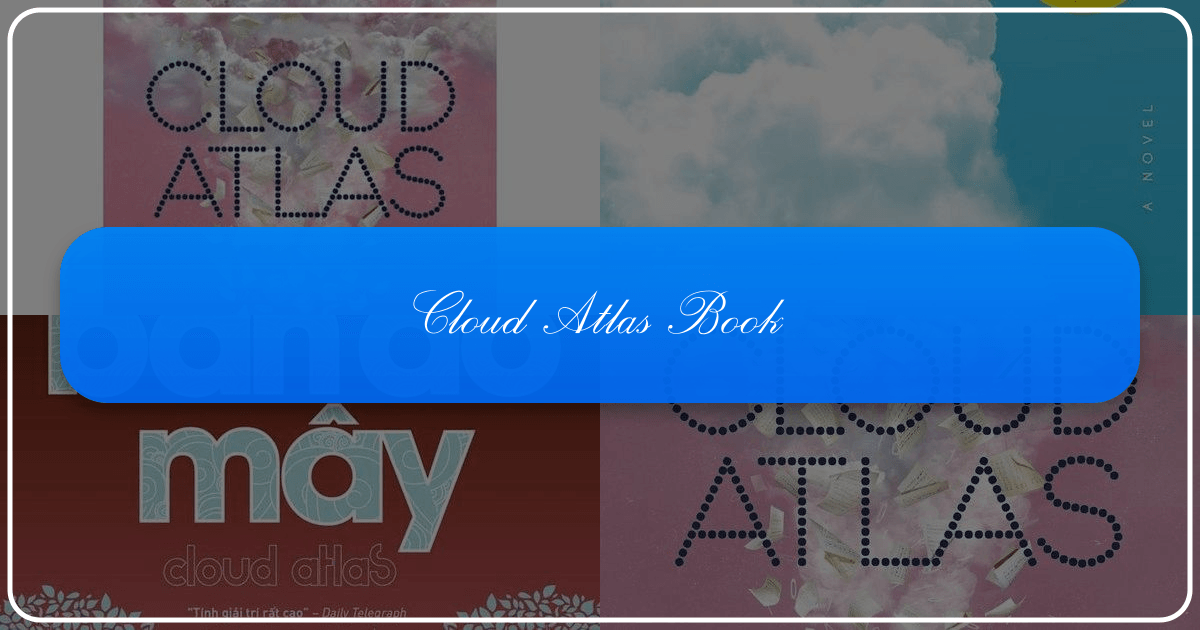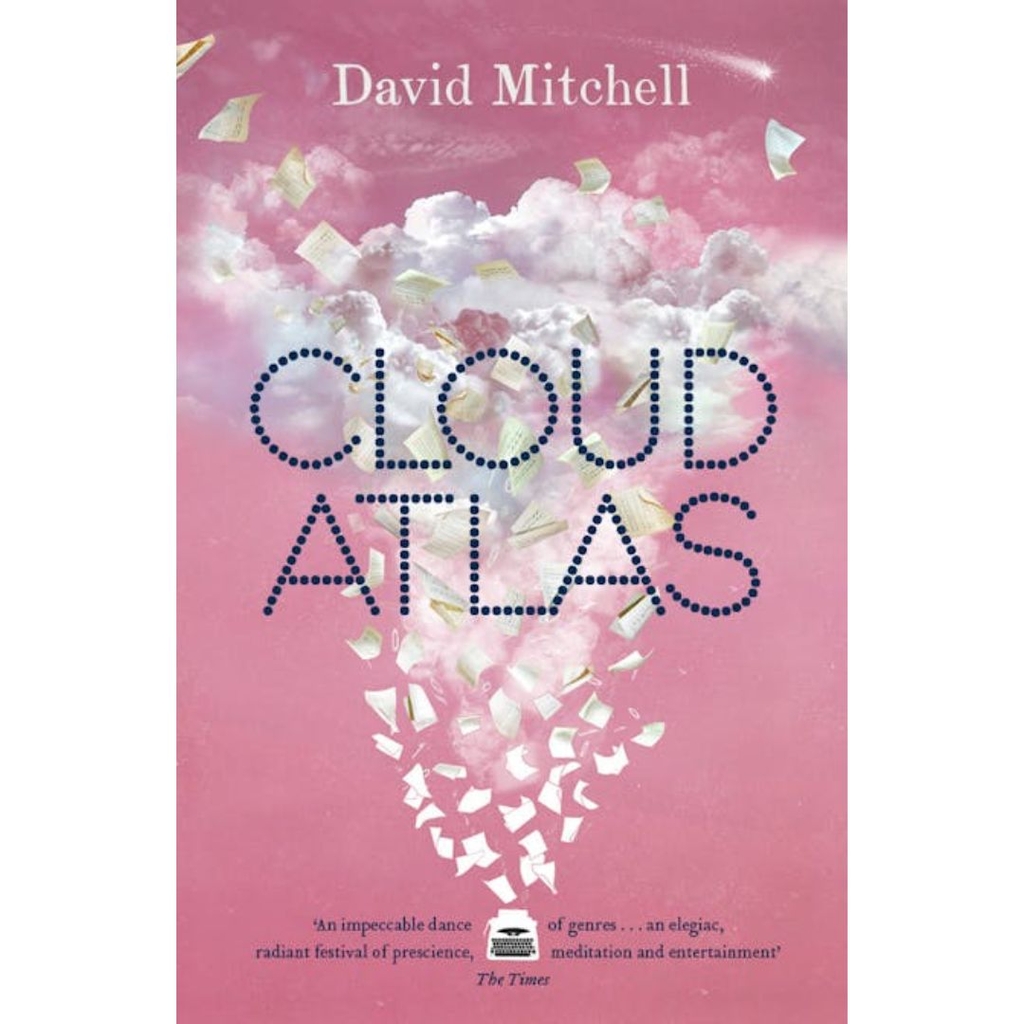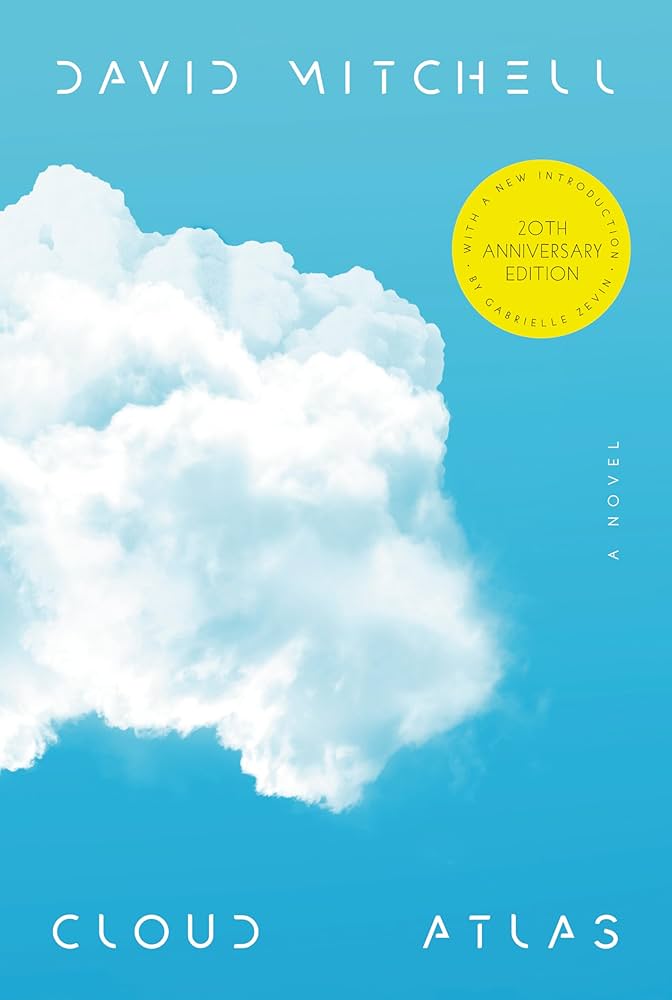Cloud Atlas Book: A Deep Dive into David Mitchell's Masterpiece

David Mitchell’s Cloud Atlas is more than just a novel; it’s a literary tapestry woven from six distinct narratives, each a unique genre piece, interconnected across centuries and continents. This sprawling epic transcends its individual stories, offering a profound exploration of human nature, reincarnation, and the cyclical nature of history. Its intricate structure and multifaceted themes have solidified its status as a modern classic, captivating readers and critics alike. This article will delve into the various aspects of Cloud Atlas, exploring its genre, authorial style, cultural impact, and the rich learning opportunities it provides.

Genre and Literary Style: A Kaleidoscope of Narrative
Cloud Atlas defies easy categorization. While primarily classified as fiction, it seamlessly blends multiple genres, showcasing Mitchell’s masterful command of diverse narrative styles. The six interwoven stories traverse various genres, including:
-
Historical Fiction: The opening tale, “The Pacific Journal of Adam Ewing,” immerses the reader in the 19th-century South Pacific, offering a glimpse into the brutal realities of colonialism and slavery. The detailed descriptions of the Chatham Islands and the stark contrast between the American protagonist and the indigenous Moriori people create a compelling historical setting. The writing style mirrors the diary entries of a 19th-century individual and the journal serves as a testament to the injustices of the era.
-
Epistolary Novel: “Letters from Zedelghem” unfolds through the correspondence between Robert Frobisher, a young composer, and his friend Rufus Sixsmith. This section delves into themes of love, betrayal, and artistic struggle against a backdrop of 1930s Belgium. The intimate nature of letter writing provides a direct look into the thoughts and emotions of the characters. The letters themselves are intricately crafted to mimic the style of early 20th-century writing.
-
Mystery/Thriller: “Half-Lives: The First Luisa Rey Mystery” is a classic thriller centered around a tenacious journalist investigating corporate greed and potential murder in 1970s California. This segment delivers suspense, intrigue, and the thrill of uncovering a dangerous conspiracy, showcasing Mitchell’s ability to craft a compelling mystery. The fast-paced nature of this section contrasts with the slower pace of other segments.
-
Contemporary Fiction: “The Ghastly Ordeal of Timothy Cavendish” throws the reader into the chaotic life of a vanity publisher in contemporary London. This darkly humorous story is presented in a more straightforward, contemporary style, providing a relatable and comedic counterpoint to the more dramatic narratives. The character of Timothy provides a compelling example of wit and resilience.
-
Dystopian Science Fiction: “An Orison of Sonmi-451” plunges into a near-future dystopian Korea, where clones are exploited as a cheap labor force. The futuristic setting and the exploration of themes such as social inequality and corporate control highlight the potential pitfalls of unchecked technological advancement and capitalist ideologies. This section’s language mirrors a future-orientated society and the political tension drives the narrative.
-
Post-Apocalyptic Fiction: “Sloosha’s Crossin’ an’ Evrythin’ After” concludes the cycle with a post-apocalyptic tale set in a future Hawaii. This section explores themes of survival, faith, and the enduring power of storytelling in a world ravaged by environmental disaster. The dialect and simplified language reflect the changed societal norms.
Mitchell doesn’t simply switch genres; he also adapts his writing style to each narrative, creating distinct voices and tones that enhance the immersive experience. This mastery of style, alongside the nested structure of the novel, makes Cloud Atlas a truly unique and unforgettable reading experience.
David Mitchell: Authorial Style and Inspirations
David Mitchell’s distinctive style is characterized by his:
-
Ambition and Scope: Cloud Atlas demonstrates his audacious ambition, weaving together multiple narratives spanning centuries and genres. This vast scope, while challenging, creates a profoundly immersive and thought-provoking reading experience.
-
Interconnectedness: The six stories aren’t simply separate narratives; they are intricately woven together through recurring motifs, characters who reappear in different forms across time, and shared experiences. Mitchell masterfully reveals these connections gradually, creating a satisfying sense of unity.
-
Genre-bending: Mitchell’s skill in seamlessly blending genres is remarkable. He moves effortlessly from historical fiction to science fiction to mystery, creating a kaleidoscope of narrative experiences. This fluidity prevents the novel from feeling repetitive or stagnant.
-
Character Development: Although the novel covers a vast scope, Mitchell carves out believable characters who resonate despite their brevity in individual stories. He explores themes of love, betrayal, loss, and resilience within each character’s journey.
-
Exploration of Universal Themes: Beneath the genre-bending and structural complexity lie enduring themes of humanity, including good versus evil, the cyclical nature of history, the consequences of unchecked greed and power, and the enduring strength of the human spirit.
Mitchell’s inspiration for Cloud Atlas came from diverse sources. The title itself, he states, was inspired by the musical piece of the same name by Japanese composer Toshi Ichiyanagi. This reflects Mitchell’s broader interest in music and how it can inspire narrative structure and thematic development. He has also mentioned the influence of other authors, including Italo Calvino, whose If on a winter’s night a traveler shares a similar approach of presenting multiple incomplete narratives. Other authors’ influence can also be observed, highlighting Mitchell’s breadth of reading and its impact on his craft.
Reading Habits and Educational Value: A Journey of Self-Discovery
Cloud Atlas challenges traditional reading habits. Its unconventional structure demands active engagement from the reader, requiring them to navigate between different time periods, narrative styles, and perspectives. This structure fosters active reading and the reader needs to connect the dots, enhancing the reading experience.

The educational value of Cloud Atlas is immense. The novel offers:
-
Historical Context: The historical narratives provide valuable insights into different eras, from the brutal realities of 19th-century colonialism to the social and political upheaval of the 20th century.
-
Philosophical Inquiry: The novel raises profound questions about the nature of reality, identity, morality, and the human condition. These themes encourage critical thinking and reflection.
-
Literary Appreciation: Cloud Atlas exemplifies the power of narrative and the versatility of literary techniques. Studying its structure, stylistic choices, and genre-bending nature provides significant insights into literary craftsmanship.
-
Cross-Cultural Understanding: The inclusion of narratives from different cultures and time periods expands the reader’s understanding of human experience across diverse contexts. Each narrative explores diverse political and cultural situations.
-
Life Lessons: The characters’ struggles and triumphs provide valuable lessons about perseverance, resilience, love, betrayal, and the importance of fighting for what is right. These lessons are deeply embedded in the narratives and enhance the reader’s understanding of human behaviour.
Reading Cloud Atlas is a transformative experience that enriches both intellectual understanding and personal growth.
Cultural Impact and Legacy: A Worldwide Phenomenon
Cloud Atlas’s impact extends far beyond the literary world. Its innovative structure and profound themes have:
-
Literary Influence: The novel has influenced many contemporary writers, inspiring them to explore more experimental narrative structures and thematic complexities.
-
Adaptations: The 2012 film adaptation, directed by Tom Tykwer and the Wachowskis, introduced Cloud Atlas to a wider audience, further solidifying its cultural prominence. Though not perfectly replicating Mitchell’s vision, the film retained the epic scale and interconnected narratives.
-
Awards and Recognition: Cloud Atlas has been lauded with numerous literary awards, including the British Book Awards Literary Fiction award and the Richard & Judy Book of the Year award. It was also shortlisted for prestigious awards such as the Booker Prize, highlighting its literary merit.
-
Communities: Cloud Atlas has fostered online communities where readers discuss its themes, interpretations, and literary significance, showcasing the enduring power of the novel’s themes.
Cloud Atlas continues to resonate with readers across the globe. It serves as a testament to the power of literature to engage, challenge, and inspire, securing its place as a lasting contribution to contemporary literature and beyond.
Libraries and Archives: Preserving a Literary Treasure
Cloud Atlas holds a place in numerous libraries and archives worldwide, reflecting its literary significance and lasting impact. Its presence in:
-
Public Libraries: The novel can be found in public library systems globally, making it accessible to a wide range of readers. It is a frequent request in libraries.
-
Digital Libraries: Digital versions of the book are available through online platforms, enhancing accessibility further and widening the readership.
-
Rare Collections and Archives: As a notable work of contemporary literature, Cloud Atlas is likely featured in special collections within universities and other significant institutions.
The preservation of Cloud Atlas within various library systems ensures its continued availability for future generations of readers and scholars. Its inclusion in archives reinforces its position as a pivotal work in contemporary literature. The availability in numerous formats allows researchers and the public easy access to the text.
In conclusion, Cloud Atlas stands as a testament to David Mitchell’s literary genius, a multifaceted work that pushes the boundaries of genre and narrative structure while exploring enduring themes of human experience. Its impact continues to resonate within the literary world and beyond, solidifying its place as a significant and enduring work of art.